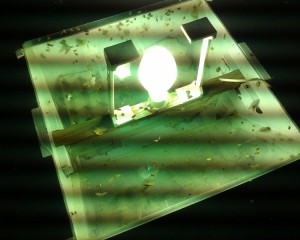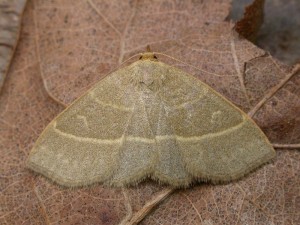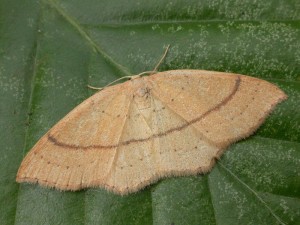3 moth-ers met up for this event. Sadly, Graham had car trouble and had to leave at the start so that just left Tony and myself. The wood is one of a group of old woodland sites south of Ipswich, famous in the past for lepidoptera. A lot of the wood has been planted in the recent past with conifers but there are still some good areas of broadleaf trees. After a tiring job of carrying the gear into the wood as the track was too overgrown to drive along (something we have done in the past) 4 mv lights were deployed, 2 along the main ride through the wood where the trees were mixed conifer/broadleaf and the other 2 along a side track in the broadleaf area where we recorded Olive crescent a few years ago.
After switch on things were a little slow coming in so we had a wander around the traps and soon found the first Olive crescent. In fact the sheet light was very poor all night so it was good that the traps drew in plenty of moths, especially the 2 along the side track. By the time we had enough at around 2am we had seen at least 20 Olive crescent so it is doing well at this site still.
I have 159sp in my notebook from the night. Other highlights seen include the following.
Clay triple lines (lots, most I have ever seen and the commonest species of macro in the traps), Lobesia reliquana, Alabonia geoffrella, Blotched emerald, Archips crataegana, Spatalistis bifasciana (a good number), Rosy marbled, Lunar yellow underwing, Gold swift, Festoon (good number), Red-necked footman (a few), Epinotia demarniana, Barred yellow, Purple clay, Strophedra weirana (good number), Beautiful hook-tip (doing well this year everywhere), Brindled white spot, Capperia britanniodactyla, Psuedotelphusa scalella (one of this very local species), Incurvaria oehlamanniella, Lobster, Grey arches (good number), Eana incanana, Lilac beauty, Cochylis nana and Luquetia lobella.
Another excellent and interesting field meeting, continuing the theme for the year so far.
Neil



